

Gauguin. Gauguin is one of the world’s most famous and best-loved artists from the early 20th century.
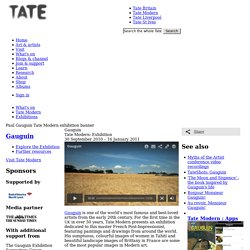
For the first time in the UK in over 50 years, Tate Modern presents an exhibition dedicated to this master French Post-Impressionist, featuring paintings and drawings from around the world. My highlight: Goya. Critics aren’t supposed to admit they are – in shrink parlance – “conflicted”.
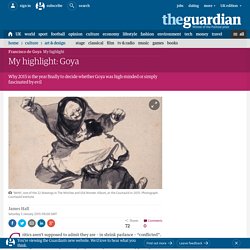
But with many great artists, we can’t definitively say that their grandeur is not grossness, their profundity superficiality. The uncertainty principle was formulated brilliantly in 1759, when Sir Joshua Reynolds said of Michelangelo: “I have seen figures by him of which it was very difficult to determine whether they were in the highest degree sublime or extremely ridiculous”; too great an indulgence of imagination produced “incoherent monsters”, Reynolds said, while too much restraint resulted in “lifeless insipidity”.
Edvard Munch. Edvard Munch 1863-1944 Norwegian Expressionist painter, lithographer, etcher and wood-engraver of figure compositions, portraits and landscapes.

Born in Loten, his family moving soon afterwards to Christiana (Oslo). Attended the Technical College 1879-80 to study engineering, then gave this up in order to paint. Early paintings in the realist tradition, influenced by his friend Christian Krohg. Paul Cézanne. Cézanne associated with the Impressionists, but always had other aims.
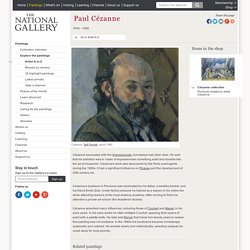
He said that his ambition was to 'make of Impressionism something solid and durable like the art of museums'. Cézanne's work was discovered by the Paris avant-garde during the 1890s. It had a significant influence on Picasso and the development of 20th-century art. Cubism - the first abstract style of modern art. The Influence of Cézanne PAUL CÉZANNE (1839-1906) 'Bibemus Quarry', 1895 (oil on canvas) Cézanne was not primarily interested in creating an illusion of depth in his painting and he abandoned the tradition of perspective drawing.
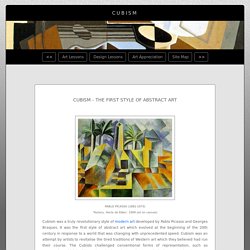
Perspective, which had been used since the Early Renaissance, was a geometric formula that solved the problem of how to draw three-dimensional objects on a two dimensional surface. Cézanne felt that the illusionism of perspective denied the fact that a painting is a flat two-dimensional object. He liked to flatten the space in his paintings to place more emphasis on their surface - to stress the difference between a painting and reality. Grove Art: Subject Guide in Oxford Art Online. National Portrait Gallery. Throughout a lengthy career, which spanned much of the twentieth century, Marcel Duchamp recast accepted modes for assembling and describing identity.
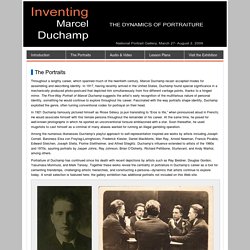
In 1917, having recently arrived in the United States, Duchamp found special significance in a mechanically produced photo-postcard that depicted him simultaneously from five different vantage points, thanks to a hinged mirror. The Five-Way Portrait of Marcel Duchamp suggests the artist’s early recognition of the multifarious nature of personal identity, something he would continue to explore throughout his career. Fascinated with the way portraits shape identity, Duchamp exploited the genre, often turning conventional codes for portrayal on their head. In 1921 Duchamp famously pictured himself as Rrose Sélavy (a pun translating to “Eros is life,” when pronounced aloud in French).
Marcel Duchamp (1887–1968) Marcel Duchamp and the Readymade. Marcel Duchamp was a pioneer of , a movement that questioned long-held assumptions about what art should be, and how it should be made.
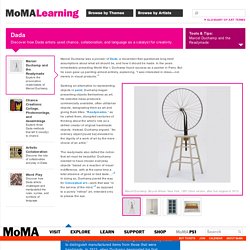
In the years immediately preceding World War I, Duchamp found success as a painter in Paris. But he soon gave up painting almost entirely, explaining, “I was interested in ideas—not merely in visual products.”
History - Leonardo da Vinci. Francisco de Goya (1746–1828) and the Spanish Enlightenment. Francisco José de Goya y Lucientes (1746–1828) is regarded as the most important Spanish artist of the late eighteenth and early nineteenth centuries.
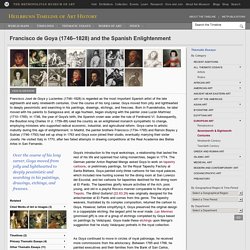
Over the course of his long career, Goya moved from jolly and lighthearted to deeply pessimistic and searching in his paintings, drawings, etchings, and frescoes. Born in Fuendetodos, he later moved with his parents to Saragossa and, at age fourteen, began studying with the painter José Luzán Martínez (1710–1785). In 1746, the year of Goya's birth, the Spanish crown was under the rule of Ferdinand VI.
Subsequently, the Bourbon king Charles III (r. 1759–88) ruled the country as an enlightened monarch sympathetic to change, employing ministers who supported radical economic, industrial, and agricultural reform. Goya came to artistic maturity during this age of enlightenment. Rembrandt. Early life and training Rembrandt Harmenszoon van Rijn was born in Leiden in the Netherlands in 1606.
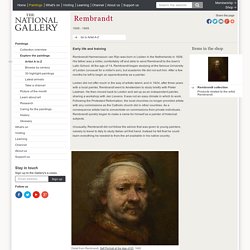
His father was a miller, comfortably off and able to send Rembrandt to the town's Latin School. At the age of 14, Rembrandt began studying at the famous University of Leiden (unusual for a miller's son), but academic life did not suit him. After a few months he left to begin an apprenticeship as a painter. Leiden did not offer much in the way of artistic talent, and in 1624, after three years with a local painter, Rembrandt went to Amsterdam to study briefly with Pieter Lastman.
Unusually, Rembrandt did not follow the advice that was given to young painters, namely to travel to Italy to study Italian art first hand. Portrait Painting. History: Middle Ages. Portrait. Georges Braque. Pablo Picasso. Collage. The term collage was coined by both Georges Braque and Pablo Picasso in the beginning of the 20th century when collage became a distinctive part of modern art.[2] History[edit] Early precedents[edit]
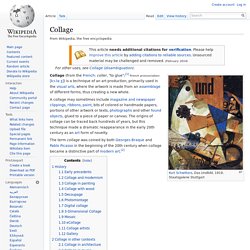
Hannah Höch - Whitechapel Gallery. 15 January – 23 March 2014, Galleries 1, 8 & Victor Petitgas Gallery (Gallery 9) The Whitechapel Gallery presents the first major UK exhibition of the influential German artist Hannah Höch (1889-1978). Hannah Höch was an important member of the Berlin Dada movement and a pioneer in collage. Splicing together images taken from popular magazines, illustrated journals and fashion publications, she created a humorous and moving commentary on society during a time of tremendous social change.
Collage Art. The Face of Portraiture Collection. Screen Shot pearltrees collage. Ian Wright. John Stezaker: 'cutting a photograph can feel like cutting through flesh' “Collectors of cinema memorabilia have a name for anonymous actors who were photographed for publicity stills, but never actually made a film," says John Stezaker. “They call them 'virgins'. When I go to collectors' fairs, it's the virgins I'm after. There is a certain melancholy attached to the faces of actors that did not make it and to images that were destined to disappear. I'm very drawn to that.” A large desk in the back room of Stezaker's house in north London is cluttered with photographs of “virgins”, some of which have been sliced in half diagonally or carefully cut around so that only a silhouette of the face remains.
“I'm using an archive to create another archive of my own,” he elaborates. John Stezaker. Marcel Duchamp. Born in Blainville, Normandy, Duchamp was the son of a notary and the younger brother of the painter Jacques Villon and the Cubist sculptor Raymond Duchamp-Villon. He studied at the Académie Julian in 1904-5. His early figure paintings were influenced by Matisse and Fauvism, but in 1911 he created a personal brand of Cubism combining earthy colours, mechanical and visceral forms, and a depiction of movement which owes as much to Futurism as to Cubism. His Nude Descending a Staircase, No.2, 1912 (Philadelphia Museum of Art), created a sensation at the 1913 New York Armory Show. Hannah Höch – review. Ian Wright. Collage. Search the Collection. Connections. Mikel Frank1280852 Madonna and Child Revisited | 2009 | Mikel Frank | Encaustic collage on board | Collection of the artist1280864 Madonna and Child with Angels | ca. 1300 | Cosimo Rosselli (Italian, Florentine) | Tempera and gold on wood | The Friedsam Collection, Bequest of Michael Friedsam, 1931 (32.100.84)7171024 Madonna and Child | ca. 1485 | Filippino Lippi (Italian, Florentine) | Tempera, oil, and gold on wood | The Jules Bache Collection, 1949 (49.7.10)7581024 Virgin and Child | ca. 1455–60 | Dieric Bouts (Netherlandish) | Oil on wood | Theodore M.